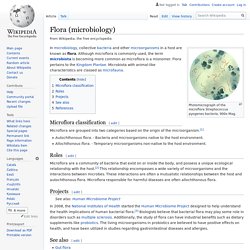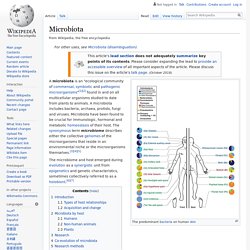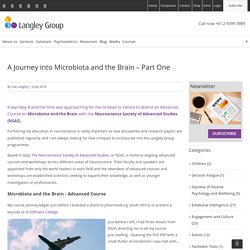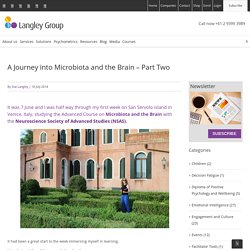

Does One Type of Gut Bacteria Make Aerobic Exercise Easier? A new study (Scheiman et al., 2019) by researchers affiliated with Harvard Medical School (HMS) provides the first evidence that a specific gut bacteria called Veillonella is correlated with increased aerobic exercise capacity in humans and mice.

These findings were published June 24 in the journal Nature Medicine. article continues after advertisement Source: Morgan Sarkissian/Unsplash The researchers speculate that Veillonella might play a role in enhancing athletic performance via the metabolic conversion of exercise-induced lactate into propionate, which is a short chain fatty acid. Interestingly, the researchers didn't find gut bacteria belonging to the genus Veillonella in the microbiome of "insufficiently active" sedentary people. "Having increased exercise capacity is a strong predictor of overall health and protection against cardiovascular disease, diabetes, and overall longevity," co-author Aleksandar Kostic of Harvard's Joslin Diabetes Center said in a recent statement. Guts, Wits, Microbiome, and the Vagus Nerve. In 2017, I wrote a nine-part series called, “A Vagus Nerve Survival Guide to Combat Fight-or-Flight Urges.”

Since then, I’ve kept my antennae up for any new research about how the gut-brain axis relies on the vagus nerve to send microbiome-based messages that affect cognition and other aspects of behavior from the gut to the brain. (See "Does Gut Microbiome Influence Mindset and Mental Toughness? " and "Vagus Nerve Facilitates Guts, Wits, and Grace Under Pressure. ") article continues after advertisement Early anatomical drawing of the "wandering" vagus nerve. Source: Wellcome Library, London/Public Domain Suffice to say, I was thrilled to read a recent press release, "The Power of the Microbiome: A Microbe-Based Treatment Reverses Social Deficits in Mouse Models of Autism," about a new study published this week in the journal Neuron which found that administering a microbe called Lactobacillus reuteri rescues social impairment in mice with autism-like behaviors via the vagus nerve.
Flora (microbiology) Photomicrograph of the microflora Streptococcus pyogenes bacteria, 900x Mag.

In microbiology, collective bacteria and other microorganisms in a host are known as flora. Although microflora is commonly used, the term microbiota is becoming more common as microflora is a misnomer. Flora pertains to the Kingdom Plantae. Microbiota with animal-like characteristics are classed as microfauna. Autochthonous flora. - Bacteria and microorganisms native to the host environment.Allochthonous flora. - Temporary microorganisms non-native to the host environment.
Microbiota. A microbiota is an "ecological community of commensal, symbiotic and pathogenic microorganisms"[1][2] found in and on all multicellular organisms studied to date from plants to animals.

A microbiota includes bacteria, archaea, protists, fungi and viruses. Microbiota have been found to be crucial for immunologic, hormonal and metabolic homeostasis of their host. The synonymous term microbiome describes either the collective genomes of the microorganisms that reside in an environmental niche or the microorganisms themselves.[3][4][5] The microbiome and host emerged during evolution as a synergistic unit from epigenetics and genetic characteristics, sometimes collectively referred to as a holobiont.[6][7] Introduction[edit] All plants and animals, from simple life forms to humans, live in close association with microbial organisms.[8] Several advances have driven the perception of microbiomes, including: Types of host relationships[edit] Human gastrointestinal microbiota. A Journey into Microbiota and the Brain – Part One. It was May 8 and the time was approaching for me to head to Venice to attend an Advanced Course on Microbiota and the Brain with the Neuroscience Society of Advanced Studies (NSAS).

Furthering my education in neuroscience is really important as new discoveries and research papers are published regularly, and I am always looking for new critiques to incorporate into the Langley Group programmes. Based in Italy, The Neuroscience Society of Advanced Studies, or NSAS, is home to ongoing advanced courses and workshops across different areas of neuroscience. Their faculty and speakers are appointed from only the world leaders in each field and the attendees of advanced courses and workshops are established scientists seeking to expand their knowledge, as well as younger investigators or professionals. Microbiota and the Brain - Advanced Course My course journey began just before I boarded a plane to Johannesburg, South Africa, to present a keynote at St Stithians College. So far, so good. A Journey into Microbiota and the Brain – Part Two.
It was 7 June and I was half way through my first week on San Servolo island in Venice, Italy, studying the Advanced Course on Microbiota and the Brain with the Neuroscience Society of Advanced Studies (NSAS).

It had been a great start to the week immersing myself in learning. Week 1 - Microbiota and the Brain The first week was Microbiota and the Brain, and we had a full faculty for the week from around the world, including some of the leading researchers in this field John Cryan, Jane Foster and Rochellys Diaz Heijtz. This field is relatively new, yet there is a lot of ongoing exploration into and explanation of this fascinating area.
I can recommend books like “10% Human” and “Superhuman” if you are keen to delve into things a little more. A Journey into Microbiota and the Brain – Part Three.
Peripheral Nervous System. Probiotics. Good Health. Does Gut Microbiome Influence Mindset and Mental Toughness?